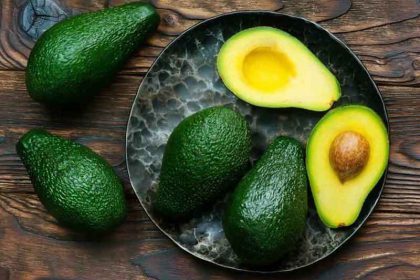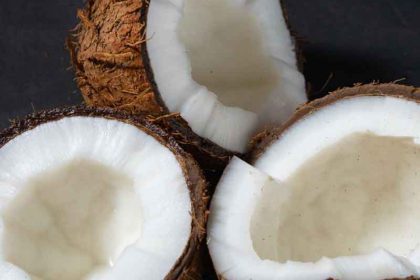Tamarind benefits sexually and females and males and skin and hair
Tamarind benefits
Tamarind benefits sexually and females and males and skin and hair on Nicholi site. We hope this article will be of interest to you.
Tamarind is a tropical fruit that is used in cooking, medicine, and as a natural remedy for various health conditions. The potential benefits of tamarind include improved digestion, lower cholesterol, regulation of blood sugar levels, reduced inflammation, weight loss, boosted immunity, improved heart health, and skin health. Tamarind can cause some side effects in certain individuals, including stomach upset, allergic reactions, interference with medications, tooth decay, hypotension, and an increased risk of kidney stones. There is no scientific evidence to suggest that tamarind has any direct benefits on sexual health or function, but it contains vitamins and minerals that are essential for overall health and may indirectly support sexual health. Tamarind offers potential health benefits for women, including supporting bone health, helping manage menstrual problems, supporting skin health, digestion, weight management goals, boosting immunity, and reducing inflammation. Additionally, tamarind has potential benefits for skin health, including promoting healthy and youthful-looking skin.
Tamarind benefits
Tamarind is a popular tropical fruit that is used in cooking, medicine, and as a natural remedy for various health conditions. Here are some of the potential benefits of tamarind:
Improves digestion: Tamarind contains fiber, which helps promote healthy digestion and prevent constipation.
Lowers cholesterol: Tamarind may help lower LDL (bad) cholesterol levels due to its high content of polyphenols and fiber.
Helps manage diabetes: Tamarind may help regulate blood sugar levels due to its high fiber and polyphenol content.
Reduces inflammation: Tamarind contains anti-inflammatory compounds that may help reduce inflammation and pain in the body.
Supports weight loss: The fiber content in tamarind may help you feel fuller for longer periods of time, reducing overall calorie intake and supporting weight loss.
Boosts immunity: Tamarind contains vitamin C, which is an important nutrient for immune system function.
May improve heart health: Tamarind’s antioxidant and anti-inflammatory properties may help protect against heart disease and stroke.
Supports skin health: Tamarind is rich in vitamin C and other antioxidants that may help protect the skin from damage caused by free radicals and promote skin health.
It’s important to note that while tamarind may offer these potential benefits, more research is needed to fully understand its effects on health. Additionally, tamarind can interact with certain medications, so if you’re taking medication, it’s important to speak with your doctor before consuming tamarind.
Tamarind side effects
While tamarind is generally considered safe when consumed in moderate amounts, it can cause some side effects in certain individuals. Here are some possible side effects of tamarind:
Stomach upset: Consuming large amounts of tamarind can cause gastrointestinal discomfort, including stomach pain, diarrhea, and vomiting.
Allergic reactions: Tamarind may trigger an allergic reaction in some people, especially those who are allergic to peanuts, as tamarind contains proteins similar to those found in peanuts.
Interference with medications: Tamarind may interact with certain medications, such as blood thinners and diabetes medications, potentially affecting their efficacy.
Tooth decay: Tamarind is acidic and can erode tooth enamel if consumed in excessive amounts or not properly rinsed from the mouth.
Hypotension: Tamarind can lower blood pressure in some people, so those with low blood pressure should exercise caution when consuming tamarind.
Increased risk of kidney stones: Tamarind contains oxalates, which can contribute to the formation of kidney stones in people who are prone to them.
It’s important to note that these side effects are typically associated with consuming large amounts of tamarind. If you experience any adverse effects after consuming tamarind, stop consuming it and consult your healthcare provider.
Tamarind benefits sexually
While tamarind has been traditionally used as a natural remedy for various health conditions, there is no scientific evidence to suggest that it has any direct benefits on sexual health or function. However, tamarind contains vitamins and minerals such as vitamin C, potassium, and magnesium that are essential for overall health and may indirectly support sexual health. Additionally, tamarind’s anti-inflammatory properties may help reduce inflammation in the body, which can have a positive effect on sexual health. It’s important to note that there are many factors that can affect sexual health and function, and while tamarind may offer some potential health benefits, it should not be relied upon as a sole treatment for any sexual health issues.
Tamarind benefits for females
Tamarind offers potential health benefits for females, including:
Supports bone health: Tamarind is a good source of calcium, which is essential for maintaining strong and healthy bones, especially important for women as they are more prone to osteoporosis.
Helps manage menstrual problems: Tamarind contains antioxidants and anti-inflammatory compounds that may help alleviate menstrual cramps, bloating, and other symptoms associated with menstruation.
Supports skin health: Tamarind is rich in vitamin C and other antioxidants that may help protect the skin from damage caused by free radicals and promote skin health, which can be beneficial for women of all ages.
Supports digestion: Tamarind is high in fiber, which can help promote healthy digestion and prevent constipation, a common problem among women.
Helps manage weight: The fiber content in tamarind may help women feel fuller for longer periods of time, reducing overall calorie intake and supporting weight management goals.
Boosts immunity: Tamarind contains vitamin C, which is an important nutrient for immune system function, helping to fight off infections and illnesses.
May reduce inflammation: Tamarind contains anti-inflammatory compounds that may help reduce inflammation and pain in the body, which can be beneficial for women experiencing inflammation-related health issues.
It’s important to note that while tamarind may offer these potential benefits, more research is needed to fully understand its effects on women’s health.
Tamarind benefits sexually for females
There is no scientific evidence to suggest that tamarind has any direct benefits on sexual health or function for females. However, tamarind contains vitamins and minerals such as vitamin C, potassium, and magnesium that are essential for overall health and may indirectly support sexual health. Additionally, tamarind’s anti-inflammatory properties may help reduce inflammation in the body, which can have a positive effect on sexual health. It’s important to note that there are many factors that can affect sexual health and function, and while tamarind may offer some potential health benefits, it should not be relied upon as a sole treatment for any sexual health issues.
Tamarind benefits for skin
Tamarind offers potential benefits for skin health, including:
Promotes healthy and youthful-looking skin: Tamarind contains antioxidants that help protect the skin from damage caused by free radicals, which can lead to premature aging of the skin. The high vitamin C content in tamarind also helps boost collagen production, which can keep the skin looking youthful and healthy.
Exfoliates and brightens skin: Tamarind contains alpha-hydroxy acids (AHAs) that help exfoliate the skin, removing dead skin cells and revealing brighter, smoother skin. AHAs can also help improve the appearance of dark spots and uneven skin tone.
Reduces inflammation: Tamarind contains anti-inflammatory compounds that can help soothe irritated skin and reduce inflammation. This makes tamarind beneficial for people with acne or other inflammatory skin conditions.
Moisturizes and hydrates skin: Tamarind is rich in hydrating compounds that can help moisturize and hydrate the skin, keeping it soft and supple.
Helps treat skin infections: Tamarind has antimicrobial properties that can help fight against bacteria and fungi, making it useful for treating skin infections.
To use tamarind for skin benefits, you can make a DIY face mask or scrub by mixing tamarind pulp with honey, yogurt, or other natural ingredients. However, if you have sensitive skin, it’s important to do a patch test before applying tamarind to your skin, as it may cause irritation in some people.
Tamarind benefits for male
Tamarind offers potential health benefits for males, including:
Supports heart health: Tamarind is rich in potassium, which can help lower blood pressure, reducing the risk of heart disease.
Helps manage blood sugar levels: Tamarind contains compounds that may help regulate blood sugar levels, making it beneficial for people with diabetes.
Boosts digestion: Tamarind is high in fiber, which can help promote healthy digestion and prevent constipation, a common problem among men.
May improve testosterone levels: Tamarind contains compounds that may help increase testosterone levels, which can improve libido and sexual function in men.
Reduces inflammation: Tamarind contains anti-inflammatory compounds that may help reduce inflammation and pain in the body, which can be beneficial for men experiencing inflammation-related health issues.
Promotes healthy skin: Tamarind is rich in vitamin C and antioxidants that can help protect the skin from damage caused by free radicals, which can lead to premature aging of the skin.
It’s important to note that while tamarind may offer these potential benefits, more research is needed to fully understand its effects on men’s health.
Tamarind benefits for breast
There is no scientific evidence to suggest that tamarind has any direct benefits on breast health. However, tamarind contains nutrients that are important for overall health and well-being, which can indirectly support breast health. For example, tamarind is a good source of calcium, which is important for maintaining strong and healthy bones, including those in the chest area. This can help reduce the risk of breast cancer, which can affect the bones in the chest. Additionally, tamarind contains antioxidants that help protect the body from damage caused by free radicals, which can have a positive effect on overall health, including breast health. Eating a diet rich in antioxidants, including those found in tamarind, may help reduce the risk of developing breast cancer and other health problems. It’s important to note that breast health is influenced by many factors, including genetics, lifestyle habits, and overall health. If you have concerns about your breast health, it’s important to speak with your healthcare provider to determine the appropriate screening and prevention strategies for you.
Side effects of tamarind for females and males
Tamarind is generally safe for consumption by females and males when taken in moderate amounts. However, some people may experience side effects after consuming tamarind, including:
Allergic reactions: Tamarind contains a protein that can cause allergic reactions in some people, especially those with a history of nut allergies.
Digestive issues: Tamarind is high in fiber, which can help promote healthy digestion. However, some people may experience digestive issues such as bloating, gas, or diarrhea if they consume too much tamarind.
Interactions with medications: Tamarind may interact with certain medications, including blood thinners and diabetes medications. If you are taking medication, it’s important to speak with your healthcare provider before consuming tamarind.
Dental problems: Tamarind is acidic and sticky, which can potentially damage tooth enamel or cause dental problems if consumed in excess.
Lowered blood pressure: Tamarind contains potassium, which can lower blood pressure. People who already have low blood pressure should be cautious when consuming tamarind.
It’s important to consume tamarind in moderation and to speak with your healthcare provider if you experience any adverse reactions after consuming tamarind.
Tamarind benefits for hair
Tamarind offers potential benefits for hair health, including:
Tamarind is a good source of vitamin C, which helps improve blood circulation in the scalp, promoting healthy hair growth. Tamarind is rich in antioxidants that help protect hair from damage caused by free radicals, which can lead to weakened hair. The vitamin C content in tamarind also helps boost collagen production, which can make hair stronger and more resilient. Tamarind contains antimicrobial and anti-inflammatory properties that can help improve scalp health by reducing the risk of infections and inflammation. Tamarind contains antifungal properties that can help reduce dandruff by eliminating the fungi that can cause it.
To use tamarind for hair benefits, you can make a DIY hair mask or rinse by mixing tamarind pulp with water or other natural ingredients like coconut oil or honey. This can help improve the overall health of your hair and scalp, promoting healthy hair growth and reducing the risk of dandruff and other scalp problems. However, if you have sensitive skin or scalp, it’s important to do a patch test before applying tamarind to your hair, as it may cause irritation in some people.
Ginger and tamarind juice benefits
Ginger and tamarind juice offer potential health benefits, including:
Supports digestion: Both ginger and tamarind contain compounds that help promote healthy digestion and prevent digestive problems like constipation and bloating.
Boosts immunity: Ginger and tamarind are rich in vitamin C and antioxidants, which help boost the immune system and protect the body from infections and diseases.
Reduces inflammation: Both ginger and tamarind contain anti-inflammatory compounds that can help reduce inflammation and pain in the body, making it beneficial for people with inflammatory conditions like arthritis.
Promotes heart health: Ginger and tamarind contain compounds that help lower blood pressure and cholesterol levels, which can reduce the risk of heart disease.
May help manage blood sugar levels: Some studies have found that ginger and tamarind may help regulate blood sugar levels, making it beneficial for people with diabetes.
To make ginger and tamarind juice, you can blend fresh ginger, tamarind pulp, and water together and strain the mixture to remove any solids. You can add honey or other natural sweeteners to improve the taste. It’s important to consume ginger and tamarind juice in moderation, as it can be acidic and may cause stomach upset in some people. If you have any medical conditions or take medication, it’s important to speak with your healthcare provider before consuming ginger and tamarind juice.
Tamarind benefits for liver
Tamarind offers potential benefits for liver health, including:
Tamarind contains compounds that help support the liver’s natural detoxification process, helping to remove toxins and harmful substances from the body. Tamarind contains anti-inflammatory compounds that can help reduce inflammation in the liver, making it beneficial for people with liver conditions like hepatitis. Tamarind is a rich source of antioxidants that help reduce oxidative stress in the liver, which can help prevent liver damage and support overall liver health. Some studies have found that tamarind can help lower cholesterol levels in the blood, which can help reduce the risk of fatty liver disease. Tamarind has been traditionally used to promote bile production, which can help improve digestion and support liver health. However, more research is needed to fully understand the potential benefits of tamarind for liver health. If you have a liver condition or take medication, it’s important to speak with your healthcare provider before consuming tamarind or any other natural remedies.
Tamarind benefits sexually in Hindi
तमरिंद के कुछ सेक्स संबंधित लाभ निम्नलिखित हैं:
वृष्यता बढ़ाता है: तमरिंद में मौजूद विटामिन सी और एंटीऑक्सिडेंट के कारण यह मर्दों में वृष्यता को बढ़ावा देने में मदद कर सकता है।स्तंभन शक्ति में सुधार: तमरिंद में मौजूद एंटीऑक्सिडेंट और विटामिन सी के कारण यह मर्दों में स्तंभन शक्ति को बढ़ाने में मदद कर सकता है।सेक्स संबंधित समस्याओं को कम करता है: तमरिंद में मौजूद एंटीऑक्सिडेंट और एंटी-इनफ्लामेट्री प्रतिक्रियाएं सेक्स संबंधित समस्याओं को कम करने में मदद कर सकती हैं।शीघ्रपतन को रोकता है: तमरिंद में मौजूद एंटी-इनफ्लामेट्री प्रतिक्रियाएं और विटामिन सी के कारण यह मर्दों में शीघ्रपतन को रोकने में मदद कर सकता है।
यहाँ बताए गए लाभ सिर्फ अनुमानित हैं और वास्तविक वैद्यकीय शोध और अध्ययनों से पुष्टि नहीं की गई हैं। इसलिए, यदि आप किसी भी सेक्स संबं
Benefits of tamarind juice
Tamarind juice is a refreshing drink that is packed with many health benefits. Some of the benefits of tamarind juice are: Tamarind juice is rich in dietary fiber, which helps to promote digestive health by regulating bowel movements and preventing constipation. Tamarind juice contains compounds that can help to lower cholesterol levels in the blood, thereby reducing the risk of heart disease. Tamarind juice is rich in vitamin C, which helps to strengthen the immune system and protect the body against infections and diseases. Tamarind juice contains antioxidants that help to protect the skin from damage caused by free radicals and promote healthy, glowing skin. Tamarind juice has anti-inflammatory properties that can help to reduce inflammation in the body and alleviate pain and swelling. Tamarind juice is low in calories and high in fiber, making it a great drink for those trying to lose weight. Tamarind juice can help to regulate blood sugar levels and improve insulin sensitivity, making it a beneficial drink for those with diabetes. Overall, tamarind juice is a delicious and healthy drink that can provide numerous health benefits.
Tamarind benefits for female breast
There is no scientific evidence to suggest that tamarind has any specific benefits for female breast health. However, tamarind is a good source of vitamins and minerals that are important for overall health, such as vitamin C, vitamin A, iron, potassium, and calcium. Tamarind also contains antioxidants and anti-inflammatory compounds, which may help to protect the body against cell damage and inflammation, potentially reducing the risk of breast cancer. Furthermore, tamarind may also have benefits for overall hormonal health due to its content of phytoestrogens, which are plant compounds that mimic the effects of estrogen in the body. However, it is important to note that more research is needed to fully understand the potential benefits of tamarind for breast health in females.
Tamarind benefits for weight loss
Tamarind can be a useful addition to a weight loss diet as it is low in calories and high in fiber, which can help to keep you feeling full and satisfied for longer periods of time. Here are some of the ways that tamarind can aid weight loss:
Tamarind is low in calories, with approximately 100 grams of tamarind containing just 239 calories. This makes it an ideal food for those looking to lose weight. Tamarind is rich in fiber, which can help to reduce hunger and prevent overeating. Fiber can also help to regulate bowel movements, promoting digestive health. Tamarind has a low glycemic index, which means that it releases glucose into the bloodstream at a slow and steady rate. This helps to prevent spikes in blood sugar levels and can reduce cravings for sugary and high-calorie foods. Tamarind is rich in B vitamins, which are essential for energy production and can help to boost metabolism, aiding in weight loss. Tamarind contains hydroxy citric acid (HCA), which has been shown to inhibit the production of an enzyme that is involved in fat storage. This can help to prevent the accumulation of fat in the body, potentially aiding in weight loss. While tamarind can be beneficial for weight loss, it is important to note that it should not be relied upon as a sole weight loss strategy. A balanced diet, regular exercise, and healthy lifestyle habits are also important for achieving and maintaining a healthy weight.
Tamarind benefits sexually for males
There is limited scientific evidence to support the claim that tamarind can directly benefit sexual health in males. While tamarind is a nutritious fruit and has been traditionally used in some cultures for its medicinal properties, its effects on sexual health are not well-researched. However, tamarind is known to be a rich source of antioxidants, which can help improve overall health and reduce inflammation. This may indirectly benefit sexual health by improving blood flow to the genital area and reducing the risk of conditions such as erectile dysfunction. Additionally, tamarind is a good source of fiber and may help improve digestive health, which can indirectly improve sexual health by reducing gastrointestinal discomfort and improving nutrient absorption. It is important to note that if you are experiencing sexual health issues, it is recommended that you speak with a healthcare professional to determine the underlying cause and appropriate treatment options.
Does tamarind contain estrogen?
Tamarind does not contain estrogen. Estrogen is a hormone that is primarily found in the female reproductive system and is responsible for regulating the menstrual cycle and secondary sexual characteristics in females. Tamarind is a fruit that is known for its sour taste and is a good source of various nutrients such as vitamins, minerals, and antioxidants. It does not contain any significant amount of hormones, including estrogen. However, tamarind has been found to have phytoestrogens, which are plant compounds that have a chemical structure similar to estrogen. Phytoestrogens can weakly mimic the effects of estrogen in the body, but they do not contain actual estrogen. While phytoestrogens have been shown to have potential health benefits, their effects on the body are still not fully understood, and more research is needed to determine their safety and efficacy.
Tamarind side effects Ayurveda
Tamarind is a fruit that is widely used in Ayurvedic medicine for its various health benefits. However, like any other medicinal plant, tamarind may have some potential side effects, particularly when consumed in excess or by certain individuals. Some of the possible side effects of tamarind in Ayurveda may include:
Constipation: Tamarind is a natural laxative and can help relieve constipation when consumed in moderation. However, if consumed in excess, it can cause diarrhea and dehydration.
Stomach upset: Tamarind contains high levels of tartaric acid, which can cause stomach upset, particularly in people with sensitive digestive systems.
Blood sugar levels: Tamarind is known to lower blood sugar levels, which can be beneficial for people with diabetes. However, it may interact with diabetes medications and cause hypoglycemia (low blood sugar) in some individuals.
Allergic reactions: Some people may be allergic to tamarind and may experience symptoms such as hives, itching, and swelling.
Interactions with medications: Tamarind may interact with certain medications, including blood thinners and cholesterol-lowering drugs, and may cause adverse effects.
It is important to consume tamarind in moderation and under the guidance of a qualified Ayurvedic practitioner to avoid any potential side effects. If you experience any adverse reactions after consuming tamarind, it is best to discontinue its use and consult a healthcare professional.
Benefits of tamarind for skin
Tamarind is a tropical fruit that has been used in traditional medicine for centuries due to its various health benefits. When it comes to skincare, tamarind offers several benefits due to its antioxidant, anti-inflammatory, and exfoliating properties. Here are some of the benefits of tamarind for the skin:
Brightens skin: Tamarind is rich in alpha-hydroxy acids (AHAs) that help to exfoliate dead skin cells and promote the growth of new skin cells. This can help to brighten the complexion and reduce the appearance of dark spots and hyperpigmentation.
Hydrates skin: Tamarind contains natural sugars that help to hydrate the skin and lock in moisture. This can help to plump up the skin and reduce the appearance of fine lines and wrinkles.
Improves skin texture: Tamarind is rich in antioxidants, which can help to protect the skin from damage caused by free radicals. This can improve the overall texture and tone of the skin.
Fights acne: Tamarind has anti-inflammatory properties that can help to reduce redness and inflammation associated with acne. It also contains natural acids that help to unclog pores and prevent the formation of new acne.
Soothes skin: Tamarind has a cooling effect on the skin, which can help to soothe irritation and reduce redness. It also contains natural compounds that help to reduce itching and discomfort associated with dry skin.
Overall, tamarind can be a great addition to your skincare routine, as it offers a range of benefits for the skin.
Tamarind side effects on the skin
While tamarind is generally safe to consume and use on the skin, some people may experience side effects, particularly if they have sensitive skin or are allergic to tamarind. Here are some possible side effects of tamarind on the skin:
Skin irritation: Tamarind contains natural acids that can be irritating to some people, particularly those with sensitive skin. If you experience redness, itching, or a burning sensation after using tamarind on your skin, stop using it immediately.
Photosensitivity: Tamarind contains psoralen, a natural compound that can make your skin more sensitive to sunlight. If you use tamarind on your skin and then expose your skin to the sun, you may be more likely to develop sunburn or skin damage.
Allergic reactions: Some people may be allergic to tamarind, which can cause a range of symptoms, including itching, swelling, hives, and difficulty breathing. If you experience any of these symptoms after using tamarind on your skin, seek medical attention immediately.
Dryness: Tamarind has astringent properties that can dry out the skin if used excessively. If you have dry or sensitive skin, it’s best to use tamarind in moderation and follow up with a hydrating moisturizer.
Effect of tamarind on periods
There is limited scientific evidence on the effects of tamarind on periods. However, tamarind has been used in traditional medicine for its potential effects on menstruation. Some traditional practitioners believe that consuming tamarind during periods can help to regulate the menstrual cycle and alleviate menstrual cramps. Tamarind is rich in vitamins and minerals, including iron, calcium, and magnesium, which may help to support menstrual health. However, there is no conclusive scientific evidence to support these claims, and more research is needed to determine the effects of tamarind on periods. It’s important to note that consuming large amounts of tamarind or using tamarind supplements may have adverse effects on the body, including gastrointestinal upset, dehydration, and electrolyte imbalances.
How much tamarind should I eat daily?
The recommended daily intake of tamarind depends on several factors, such as age, gender, health status, and dietary needs. As a general guideline, consuming 1-2 tablespoons of tamarind pulp or 1-2 tamarind pods per day is considered safe for most people. However, it’s important to note that tamarind is high in tartaric acid, which can cause gastrointestinal discomfort and dental erosion if consumed in excess. Therefore, it’s best to consume tamarind in moderation and avoid consuming large amounts at once. Additionally, if you have any underlying health conditions, such as diabetes, high blood pressure, or kidney disease, it’s important to consult a healthcare professional before consuming tamarind, as it may interact with certain medications or affect your health in other ways. Overall, tamarind can be a healthy and flavorful addition to your diet, but it’s important to consume it in moderation and consult a healthcare professional if you have any concerns about its safety or potential effects on your health.
Tamarind and erectile dysfunction
There is limited scientific evidence on the effects of tamarind on erectile dysfunction (ED). However, some traditional medicine practitioners believe that tamarind may have potential benefits for men’s sexual health due to its antioxidant and anti-inflammatory properties. Tamarind is rich in compounds that have been shown to improve blood circulation and reduce inflammation, which are both important factors in maintaining healthy erectile function. Tamarind is also rich in nutrients such as iron and potassium, which can help to support overall cardiovascular health and improve blood flow. However, more research is needed to determine the effects of tamarind on ED, and it’s important to note that ED can have many underlying causes, including medical conditions, lifestyle factors, and psychological factors. Therefore, if you are experiencing ED, it’s important to consult a healthcare professional for a proper diagnosis and treatment plan.
Tamarind seeds poisonous
Tamarind seeds contain a compound called cyanogenic glycoside, which can release cyanide when ingested in large amounts. Cyanide is a toxic substance that can be harmful to humans and animals if consumed in excess. However, the amount of cyanogenic glycoside in tamarind seeds is relatively small, and it is generally considered safe to consume small amounts of tamarind seeds. In fact, tamarind seeds have been used in traditional medicine for their potential health benefits. That being said, it is still important to exercise caution when consuming tamarind seeds. It is recommended to eat them in moderation and to avoid consuming large amounts. Additionally, if you experience any adverse effects after consuming tamarind seeds, you should seek medical attention immediately.
Tamarind on face side effects
Tamarind is a natural ingredient that has been used for centuries in traditional medicine and skincare. It contains various beneficial compounds, including antioxidants and alpha hydroxy acids, which can help exfoliate and brighten the skin. However, using tamarind on the face can also have some side effects, especially if you have sensitive skin or are allergic to tamarind. Some of the possible side effects of using tamarind on the face may include:
Skin irritation: Tamarind can be acidic, which may cause irritation or burning sensations on the skin.
Allergic reactions: Some people may be allergic to tamarind, which can cause symptoms such as redness, swelling, itching, or hives.
Photosensitivity: Tamarind contains compounds that can make the skin more sensitive to sunlight, which can lead to sunburn or other skin damage.
To avoid these side effects, it is essential to do a patch test before using tamarind on your face. Apply a small amount of tamarind paste or juice on a small area of your skin, wait for 24 hours, and observe any adverse reactions. If you experience any negative effects, discontinue use immediately and seek medical advice if necessary.
Additionally, it is essential to use tamarind in moderation and to dilute it with water or other ingredients to avoid any harsh reactions on the skin.
How to use tamarind for skin whitening?
Tamarind is a natural ingredient that can be used for skin whitening. It contains alpha-hydroxy acids (AHAs) and antioxidants, which can help exfoliate the skin, remove dead skin cells, and lighten dark spots.
Here’s a simple DIY recipe that you can try at home:
Ingredients:
Tamarind pulp or paste
Honey
Yogurt
Lemon juice
Instructions:
Soak a small piece of tamarind pulp in water for 10-15 minutes, then extract the pulp.
Add 1 tablespoon of honey, 1 tablespoon of yogurt, and 1 teaspoon of lemon juice to the tamarind pulp and mix well.
Apply the mixture to your face and neck, avoiding the eye area.
Leave the mask on for 15-20 minutes, then rinse off with warm water.
Repeat this process twice a week for best results.
Note: Before using any new ingredient on your skin, it’s important to do a patch test first to make sure you’re not allergic or sensitive to it. If you experience any irritation or discomfort, stop using the mixture immediately.
Tamarind for skin pigmentation
Tamarind can be used for skin pigmentation as it contains natural AHAs and antioxidants that help exfoliate the skin, remove dead skin cells, and fade dark spots. Here’s a simple DIY recipe that you can try at home:
Ingredients:
Tamarind paste or pulp
Honey
Rosewater
Instructions:
Soak a small piece of tamarind pulp in water for 10-15 minutes, then extract the pulp.
Add 1 tablespoon of honey and 1 tablespoon of rosewater to the tamarind pulp and mix well.
Apply the mixture to your face and neck, avoiding the eye area.
Leave the mask on for 15-20 minutes, then rinse off with warm water.
Repeat this process twice a week for best results.
Note: Before using any new ingredient on your skin, it’s important to do a patch test first to make sure you’re not allergic or sensitive to it. If you experience any irritation or discomfort, stop using the mixture immediately. Additionally, it’s important to use sunscreen regularly and avoid excessive sun exposure to prevent further skin pigmentation.
Tamarind for acne scars
Tamarind can be used for acne scars as it contains natural AHAs and antioxidants that help exfoliate the skin, promote skin cell regeneration, and reduce the appearance of scars. Here’s a simple DIY recipe that you can try at home:
Ingredients:
Tamarind paste or pulp
Aloe vera gel
Honey
Turmeric powder
Instructions:
Soak a small piece of tamarind pulp in water for 10-15 minutes, then extract the pulp.
Add 1 tablespoon of aloe vera gel, 1 teaspoon of honey, and 1/2 teaspoon of turmeric powder to the tamarind pulp and mix well.
Apply the mixture to your face and neck, avoiding the eye area.
Leave the mask on for 15-20 minutes, then rinse off with warm water.
Repeat this process twice a week for best results.
Note: Before using any new ingredient on your skin, it’s important to do a patch test first to make sure you’re not allergic or sensitive to it. If you experience any irritation or discomfort, stop using the mixture immediately. Additionally, it’s important to maintain a consistent skincare routine, including gentle cleansing and moisturizing, to prevent further acne breakouts and scarring.
Tamarind leaf benefits for skin
Tamarind leaves have numerous benefits for the skin due to their antibacterial, anti-inflammatory, and antioxidant properties. Here are some of the benefits of using tamarind leaves for the skin:
Fights Acne: Tamarind leaves contain natural antibacterial and anti-inflammatory properties that can help fight acne and reduce the appearance of acne scars.
Reduces Dark Spots: Tamarind leaves contain natural alpha-hydroxy acids (AHAs) that help exfoliate the skin and fade dark spots and pigmentation.
Soothes Inflammation: Tamarind leaves have natural anti-inflammatory properties that can soothe inflammation and irritation on the skin.
Moisturizes and Hydrates: Tamarind leaves can be used to make a natural face pack that can help moisturize and hydrate the skin, leaving it soft and supple.
Anti-aging Benefits: Tamarind leaves contain antioxidants that can help fight free radicals and prevent premature aging of the skin.
To use tamarind leaves for skin, you can grind fresh tamarind leaves into a fine paste and apply it to your face as a face pack. Leave the pack on for 15-20 minutes, then rinse off with water. You can also mix the tamarind leaf paste with other natural ingredients such as honey, yogurt, or turmeric for added benefits.
How to make a tamarind face mask?
To make a tamarind face mask, you will need tamarind pulp or paste, and other natural ingredients depending on your skin type and concerns. Here’s a simple recipe for a tamarind face mask:
Ingredients:
1 tablespoon tamarind pulp or paste
1 teaspoon honey
1 teaspoon yogurt
1 teaspoon turmeric powder (optional)
Instructions:
Soak a small piece of tamarind pulp in water for 10-15 minutes, then extract the pulp.
In a small bowl, mix the tamarind pulp with honey, yogurt, and turmeric powder (if using) to form a smooth paste.
Apply the mask to your face and neck, avoiding the eye area.
Leave the mask on for 15-20 minutes, then rinse off with warm water.
Pat your skin dry and apply a moisturizer to seal in the hydration.
Note: You can adjust the quantities of the ingredients based on your skin type and preferences. If you have sensitive skin, it’s recommended to do a patch test before applying the mask to your face. If you experience any irritation or discomfort, stop using the mask immediately.






















